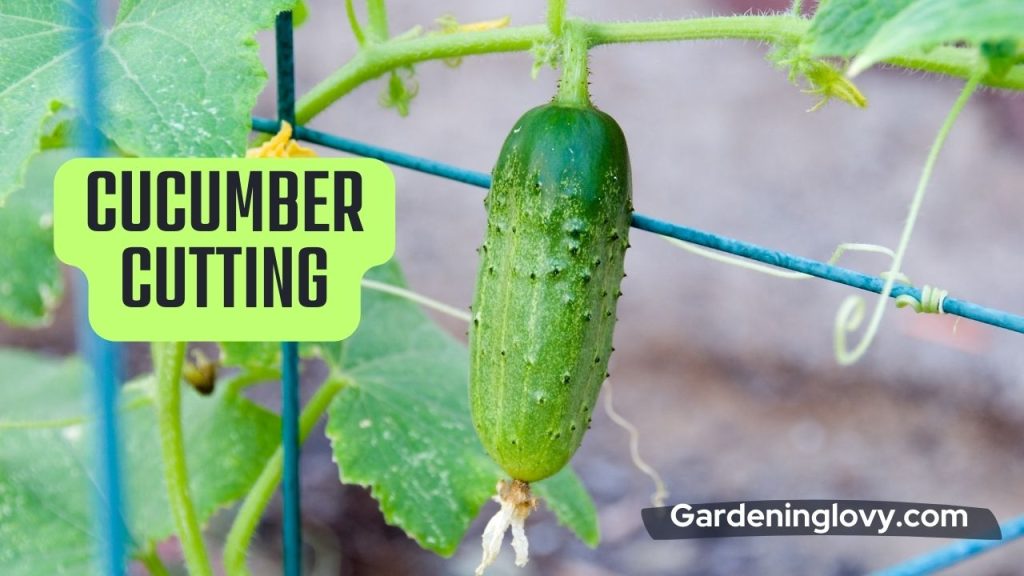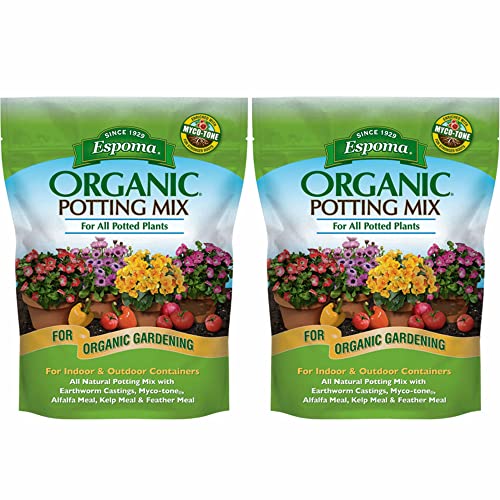Cucumber vines grown from cuttings are an excellent way to reproduce new plants without having to start from scratch.
It’s a simple and inexpensive approach to enlarging your garden while also ensuring a steady supply of healthy plants that are genetically similar to the parent plant.
To grow cucumber vines from cuttings, take a cutting from a healthy cucumber plant, remove the lower leaves, and place it in water or soil until it roots. Once rooted, transplant the cutting into a pot or garden bed and care for it as you would a regular cucumber plant.
In this blog post, we’ll go through in detail how to cultivate cucumber vines from cuttings step by step.
How To Grow Cucumber Vines From Cuttings?

Cucumber plants can be propagated through seeds or cuttings. Here are the steps to propagate cucumber plants from cuttings:
How to Choose a Healthier Cucumber Plant
To take a cutting, make a clean cut immediately below a leaf node with your pruning shears. The cutting should be 6-8 inches long and contain a few leaves.
To encourage root growth, remove the lower leaves from the cutting and make a fresh cut near the base of the stem.
Materials and tools
- Sharp, clean garden shears
- Rooting hormone (optional)
- Potting soil
- Pots or containers
- Water
Steps To Follow
1. Taking the cutting
To take a cutting, make a clean cut immediately below a leaf node with your pruning shears. The cutting should be 6-8 inches long and contain a few leaves.
To encourage root growth, remove the lower leaves from the cutting and make a fresh cut near the base of the stem.
2. Rooting the Cutting
Cucumber cuttings can be rooted in two ways: water propagation and soil propagation.
Water propagation
Place the cutting in a container of water and keep it in a warm, sunny location for water propagation. To avoid stagnation, change the water every few days.
Soil propagation
To propagate by soil, insert the cutting in a pot of damp potting soil and cover it with a plastic bag to keep it humid. Maintain a moist but not soggy soil.
Put the crop in a warm, tropical setting after watering it. Maintain wet but not soggy soil. The cutting should begin to root and sprout new growth after a few weeks.
You can replant the cucumber plant into a bigger container or straight into the garden if the new growth has a good foundation.
3. Cutting Transplantation
When the cutting’s roots have formed, it’s time to transplant it into a pot or garden bed. Choose a site with plenty of sunlight and well-draining soil.
Water the plant on a regular basis and offer support for the vine as it grows.
Since not all cucumber clippings will take root, it’s crucial to keep in mind that taking multiple cuttings will boost your success rate.
How To Maintain Cucumber Crops at Home?

Growing cucumbers can be a rewarding and enjoyable experience. Here are some tips for maintaining a cucumber crop once grown from the cuttings:
1. Soil Preparation:
Cucumbers prefer well-drained, fertile soil. To improve the condition and soil’s foundation, incorporate manure or even well compost.
2. Planting:
Spread cucumbers at a minimum of 12 inches from one another and in full sunlight. The soil should be kept moist but not waterlogged.
3. Watering
The ground must be kept consistently damp. However, it is important not to overwater, as this can cause root rot. Check how to water cucumber, for correct watering schedules.
- Read the best guide on overwatering vs underwatering.
4. Fertilizing:
Regular feeding is necessary for cucumbers. Apply a balanced feed with a Threshold of 10-10-10 (nitrate, phosphate, potash). When the plant is developing, fertilize it maybe once every month.
5. Pruning:
Cucumbers can be trained to grow vertically on trellises or stakes, which can help save space and improve air circulation. Prune any side shoots or suckers that form at the base of the plant.
6. Pest Control:
Cucumbers are susceptible to a variety of pests, including aphids, cucumber beetles, and spider mites.
Use synthetic or natural remedies as needed to protect your plants from pest damage by keeping an eye out for any symptoms.
Common Issues with Cucumber Crops
Although cucumbers are typically simple crops to grow, they are not immune to all problems. Here are some common issues that can arise with cucumber crops:
1. Fungal diseases:
Cucumbers are prone to fungal diseases such as powdery mildew, downy mildew, and anthracnose.
These illnesses can make fruit deformed and discolored and lead foliage to become yellow or brown.
Avoid overhead spraying and enhance the airflow all around plants to avoid fungus problems. Moreover, fungicides may be employed as a preventative precaution.
2. Insect pests:
Cucumber beetles and aphids are common pests that can damage cucumber plants. Cucumber beetles can transmit bacterial wilt, a disease that can kill plants.
Aphids can cause stunted growth and distortion of leaves and fruit. Neem oil or insecticidal detergent may be employed to manage these Aphids using pesticides that can harm bees.
3. Overcrowding:
Cucumbers can be susceptible to overcrowding, which can lead to poor air circulation, increased humidity, and disease.
Plant cucumbers at least 12 inches apart, and thin out any weak or damaged plants.
4. Water stress:
Cucumbers need consistent moisture, and if they are not adequately watered, they can become stressed and develop bitter fruit.
According to the climate, water cucumbers well once or sometimes per week.
5. Deficiencies in nutrients:
Cucumbers need enough nutrients, particularly nitrogen, phosphorus, and potassium. These nutrients are necessary for healthy fruit development and normal growth.
Be sure to fertilize cucumbers regularly with a balanced fertilizer.
Poor pollination: Cucumbers require pollination to set fruit, and if the flowers are not adequately pollinated, the fruit may be misshapen or not develop at all.
To encourage pollination, plant bee-friendly flowers nearby.
What time of year should cucumbers be picked?
Cucumbers should be picked when they are mature and have reached their full
size but before they become overripe and develop a yellow color.
The exact timing will depend on the specific variety of cucumbers and the growing
conditions.
Generally, cucumbers are ready to be harvested when they are about 6
inches long for slicing varieties or 3-4 inches long for pickling varieties.
They should be firm and have a bright, dark green color. If they are left on
the vine too long, they can become bitter and develop tough outer skin.
In terms of timing, cucumbers are typically ready to be picked 50-70 days
after planting, depending on the variety and growing conditions.
It’s a good idea to check the plants regularly and harvest the cucumbers as soon as they
reach the appropriate size and color.
Conclusion
Growing cucumber vines from cuttings is a great approach to boost crop yield without purchasing new plants.
Taking a cutting from a healthy cucumber plant and anchoring it in soil or water is a simple operation.
You can effectively propagate new cucumber plants by following the instructions provided in this blog post.

My name is Olivia, and I live in the United States and love having plants in my garden. Lots of plants are there on my balcony, indoor and outdoor garden also. Here I am trying to share useful gardening tips, how to grow and care for various plants, etc.

